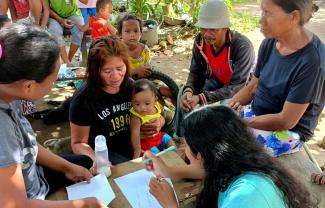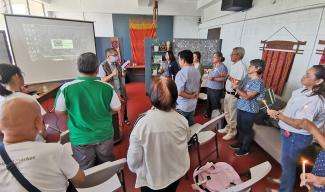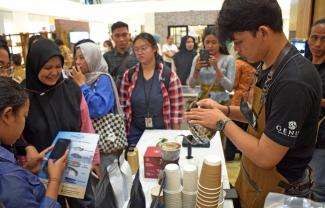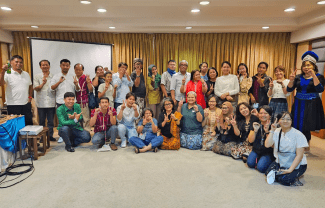Water access – right to life
Indigenous People in Southern Bukidnon, Philippines have a rich culture intimately interwoven with the natural world. In a number of communities, natural resources such as waterfalls, springs, rivers and small lakes still abound. But despite nature’s gifts, many Indigenous communities suffer scarcity of clean and safe water, due to the distance of the water source from their homes, and the absence of a water distribution system. Despite the “development” of municipalities and technology, the basic service of providing accessible water to Indigenous families in far-flung areas are absent. Women and children are most affected by the scarcity of clean water. Women need water the most for cooking, hygiene and domestic chores. In some of these communities, they have to climb down for almost 30 minutes along steep hillsides to reach the spring or river, and need another 30 minutes or more to climb up the slippery slopes with only one or two gallons of precious water at most. Some are able use horse and carabao as transportation, some walk barefoot for safety because the trails are too muddy, while those who are privileged enough are able to use their motorcycles to haul water.
Equitable access to clean and safe water can change a whole community’s life, as was the experience of the Serukadang Menuvu community in 2017. Jean Tigbabao, 39 years old, said “ Sa unang panahon nga wala pami tubig sa duol akung natagamantaman ang kalisud sa pag panglaba, labi na kung hulaw kay sa Lalapoy mi magkabo para ilimnon ug gamiton sa balay. Sa pagka karon sobrang kalipay ang akung gibati tungod kay ang kalisod nga akung natagamtaman haruhay na, nga wala nami naglisod ug tubig.”
“Before when we didn’t have water nearby, it was really difficult, especially washing clothes; especially in the dry season, because we fetch water from Lalapoy (river) for drinking water and other domestic needs. Now, I am very happy because it is so much easier that we don’t have to struggle for water.”
With less time spent for fetching water up and down the hill, the women and men of Serukadang had more time to focus on regaining control of their ancestral domain, and to strengthen their governance. They were confident to host meetings with other communities within their unified ancestral domain claim, because they can easily prepare food and clean up as needed for these large meetings where they discussed the issues in their territory.
At present, Samdhana is facilitating the proposals for a community water system in five (5) Indigenous Menuvu Communities: Kirintëkën-Ilëntungën from Inlangsang and Adtuyon, in Pangantucan municipality; Pualas and Inator, Mahayahay in Don Carlos; and Sitio Maulawe, Kalilangan. An engineer was hired to assess each community’s water source and provide the recommendations and technical plans for a water system. The Water System Project Proposal Making was conducted with old and young community members alike participating in workshops to accomplish the proposal. This also became an entrypoint to discuss other pressing issues like land grabs that were happening even within the ancestral domain, and their plans to improve their wellbeing. Knowing that the construction of the water system entails thousands of pesos, the communities pledged their counterparts to such as voluntary labor, local foods for meals of the construction workers like banana, cassava, and sweet potatoes. They also committed to holding “Buron-buron” or community meetings for managing the water system in the future. This initiative has given hope for the tribe that their right to a full life will begin to be realized with a simple but necessary access to water. ###




